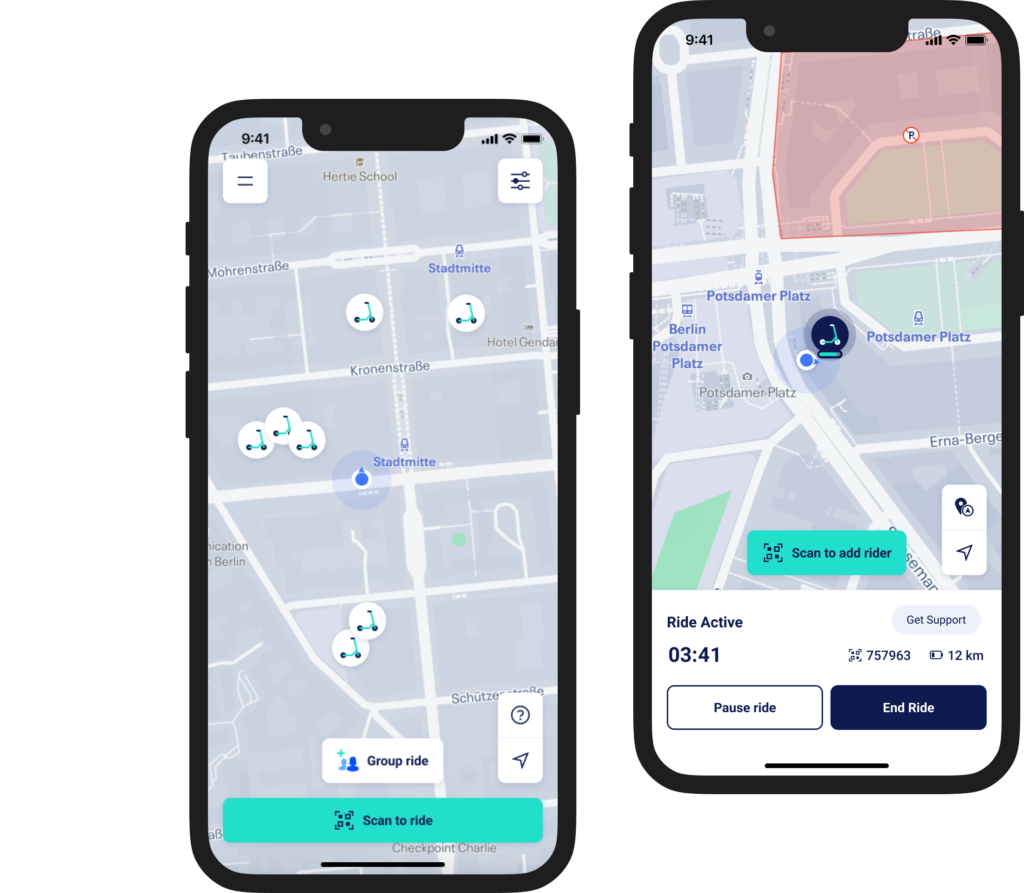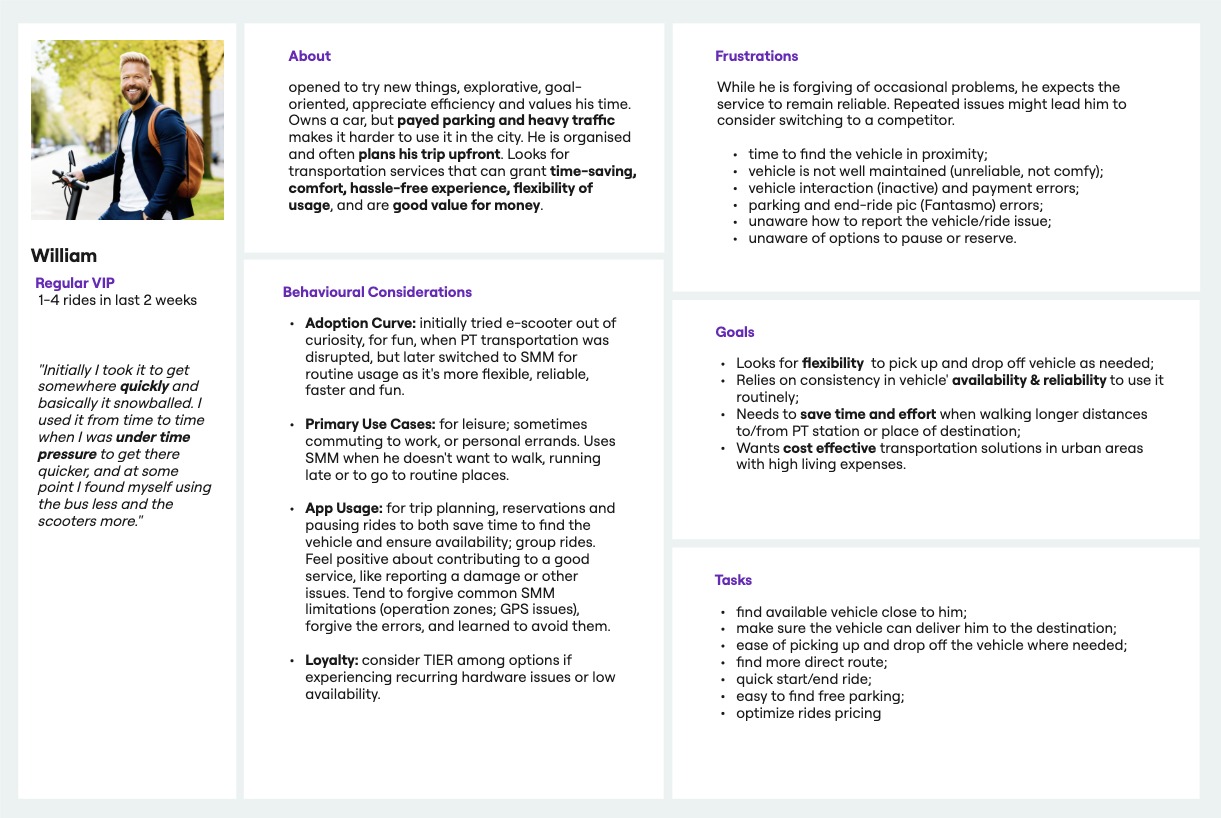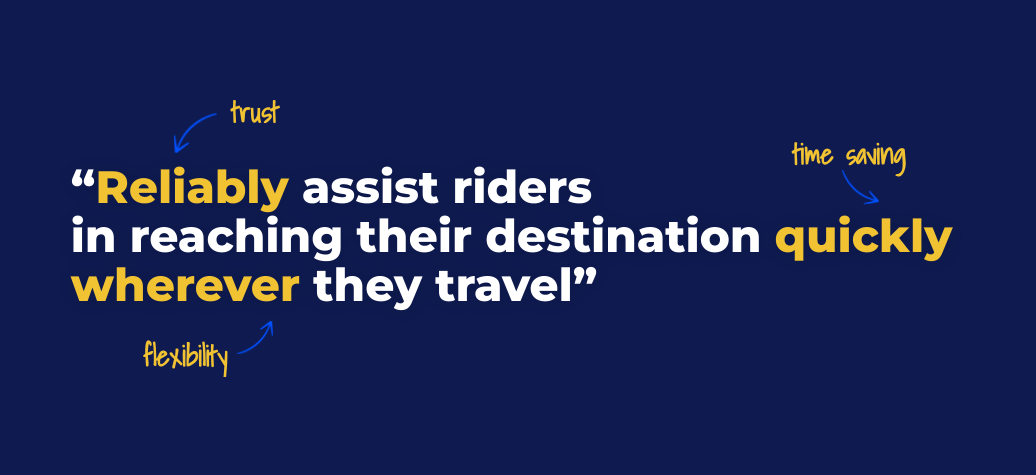TIER Mobility
Role: as a Lead Designer, I collaborated closely with the Product Director and User Research Lead. I synthesized quantitative and qualitative reports, conducted cross-functional workshops.

The Problem
The organization lacks a shared product vision to develop a holistic cross-functional roadmap.
The Solution
Create an impactful, lean mid-term view of the experience users will have with the application.
The Process
To reach the goal, I used the Product Vision Canvas, conducted a set of cross-team workshops for full-team alignment, and aimed to have a solid product vision focused on the customer with sharply defined business objectives.
Part I.
Defining Core Challenges and Objectives.
Activity:
Cross-functional and stakeholder interviews (app funnel review: churn rate, conversion/retention, activation), and exploratory user research review (analysis & sythesis of: existing perona, user journey, benchmark report, value mapping, diary and field studies).

Outcome:
Experience brief of Core Challenges for Riders:
- Lack reliability of our service;
- Want flexibility in finding and parking the vehicle;
- Need a time-saving soluiton to reach their destination.
Product:
- High effort to support and scale the multitude of city configurations (riding zones, fees, and special features per city);
- Users satisfaction rate is -8;
- 19% of start ride errors negatively impact conversion;
- 8% of end ride errors negatively impact retention.
City Managers:
- Loosing tenders in strategic locations (London, Paris, Oslo) due to unmet safety and compliance requirements;
- More riding zones restrictions, while infrastructure for micro-mobility is not well prepared.
Core Objectives:
- Increase VIP rideres retention;
- Increase conversion from first-time-rider to super-VIP;
- Increase riders satisfaction (NPS score);
- Increase ride reliability and active vehicles;
- Reduce operational costs;
- Reduce cities config. complexity;
- Buid more trust with cities.
Part I.
Creating the Vision Statement.
Activity:
Visioning Workshop – the team reviews research, answers focus questions, crafts vision options, and votes on a vision statement.

Outcome:

Part I.
Visualising end-to-end product future vision.
Activity:
Sketching Workshop – team recaps Core Objectives, sketches ideas, and fills out a skeleton storyboard. The design team prepares a prototype.

Outcome:
when preparing the prototype, I collaborated with a Product Designer swapping the roles of Driver (responsible for the physical making) and Navigator (following in observation mode). We divided the user journey, enabling us to challenge the entire flow, enrich it with diverse solutions, and deliver the result within 2 days.
The Final Concept Vision
Reviewed application
Suggested concept –
Followup
Things I would do after delivering the prototype:
I. Validate
Conduct a moderated usability test of a new application concept. Iterate according to the collected feedbacks.
II. Prioritise
Run a workshop, where the team assigns priorities for new soluitons, and fills out a skeleton roadmap.
III. Measure
Define UX and business success metrics for each deliverable included to the roadmap.

